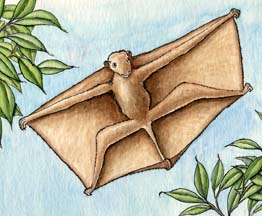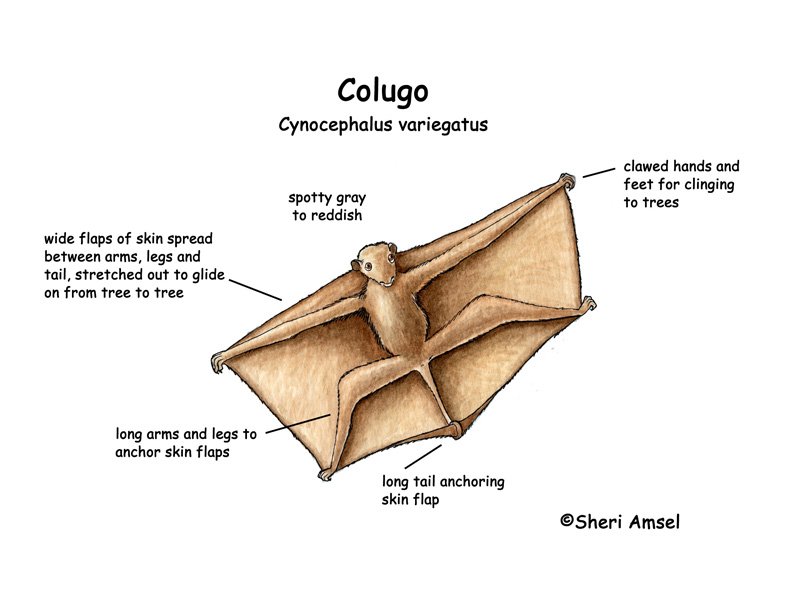

Colugo are found in Malaysia, Southeast Asia, the islands of Indonesia and the Philippines.
They live up in the trees of the tropical forest and woodlands.
Colugo are spotty gray to reddish. They are 15 inches long and weigh about 3 pounds. They are about the size of a house cat, but their body is shaped more like a flying squirrel. They have flaps of skin stretching from their necks out to their “hands” and then along the sides of their bodies to their toes and tail.
They carry the baby on their belly using their skin flaps like a hammock. They are active at night (nocturnal).
They glide from tree to tree, eating leaves, stems and fruit.
Predators are nocturnal hunters of the jungles, such as large snakes, and leopards.
Females are pregnant for 2 months (gestation). They have 1 young.
They can live in captivity more than 15 years. No one knows how long they live in the wild.
Kingdom: Animalia
Phylum: Chordata
Class: Mammalia
Order: Dermoptera
Family: Cynocephalidae
Genus: Cynocephalus
Species: variegatus
When you research information you must cite the reference. Citing for websites is different from citing from books, magazines and periodicals. The style of citing shown here is from the MLA Style Citations (Modern Language Association).
When citing a WEBSITE the general format is as follows.
Author Last Name, First Name(s). "Title: Subtitle of Part of Web Page, if appropriate." Title: Subtitle: Section of Page if appropriate. Sponsoring/Publishing Agency, If Given. Additional significant descriptive information. Date of Electronic Publication or other Date, such as Last Updated. Day Month Year of access < URL >.
Amsel, Sheri. "Colugo" Exploring Nature Educational Resource ©2005-2024. December 13, 2024
< http://www.exploringnature.org/db/view/Colugo >

